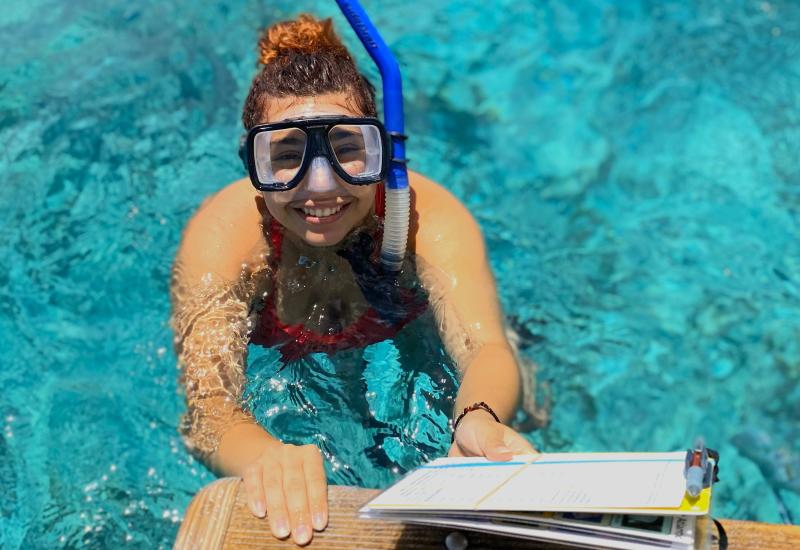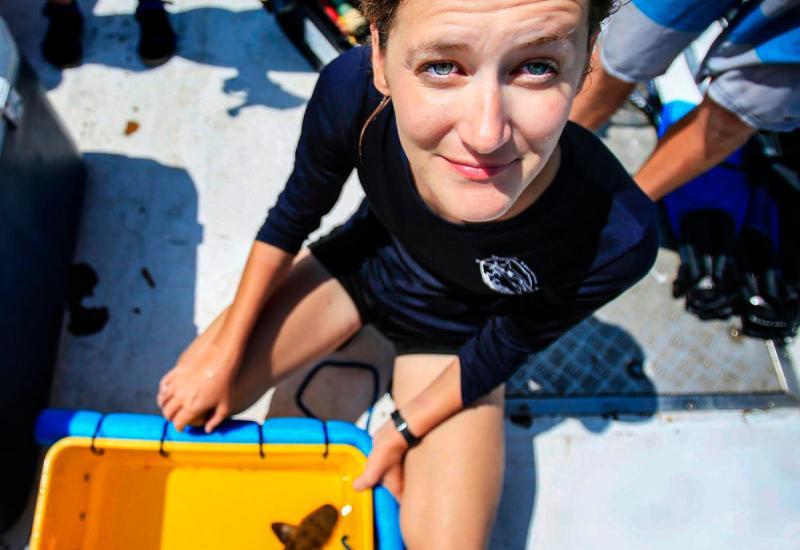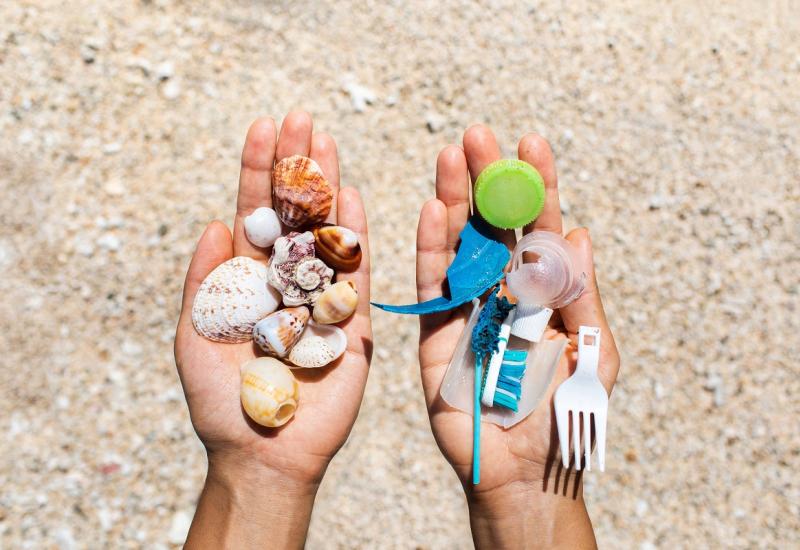Australians Man the Frontlines to Help Protect the Great Barrier Reef
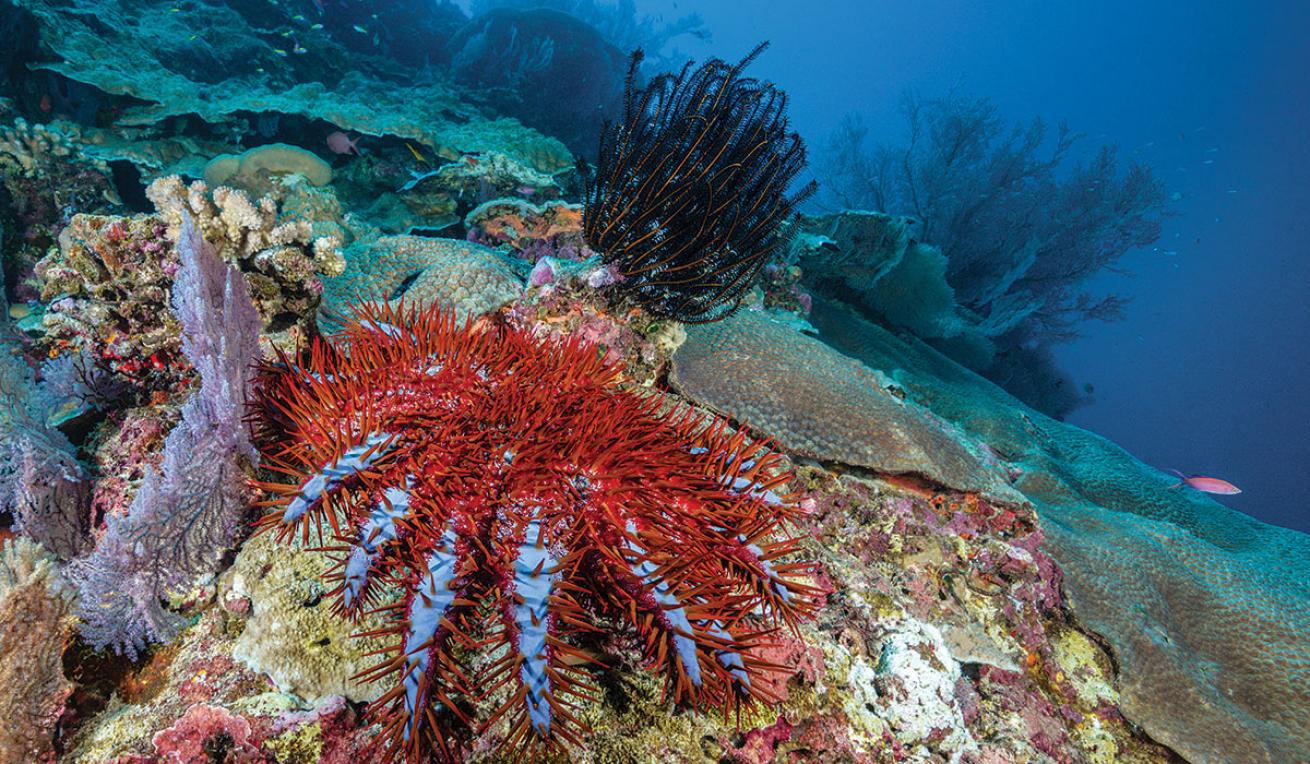
Waterframe/AlamyA crown-of-thorns sea star devouring Australia’s Christmas Reef.
"The biggest threat to the Great Barrier Reef is climate change, but perhaps equally damaging is apathy,” says Col McKenzie.
For more than 30 years, McKenzie has been fighting for the health of Australia’s Great Barrier Reef. In recent years, he’s been outspoken about the damage done to tourism by published climate-science reports declaring that the reef is dead or dying. Instead of apocalyptic projections, he prefers a practical response.
“If people give up on the reef, then we really will lose one of the world’s greatest natural wonders,” says McKenzie. “We know the research and the threat, but to maintain hope, we need to see a practical response, which is why the local people are getting into the water and trying to make a difference.”
Alongside the reef’s official custodians — which include the Great Barrier Reef Marine Park Authority and the Association of Marine Park Tourism Operators — countless activists are working on conservation projects that include education programs, pollution control, coral nurseries and turtle sanctuaries.
McKenzie has now built his own army of conservationists. Under his guidance, and armed with only wetsuits, scuba gear and syringes, an underwater army of newly trained divers is taking on one of the more-significant threats to the Great Barrier Reef — the crown-of-thorns sea star — one shot at a time.
How to become a CoTS Warrior
If you’re a certified divemaster with a current commercial medical certificate and you’d like to take part in the CoTS Control Program’s training course, or if you’re interested in full-time employment as a CoTS diver, send resumes to Steve Moon at steve@projectsglobal.net.
McKenzie heads up AMPTO, the organization that manages the Crown of Thorns Control Program in Queensland. Year-round, the program sees teams of up to 12 men and women taking part in nonstop 10-day containment voyages off the coast of Cairns and Port Douglas in Tropical North Queensland. After 42 years of research, it has been established that the quickest and safest way to kill this coral predator is with a single lethal injection of bile salts.
“We would be pretty happy in the past if we could take 500 crown of thorns in a day using the old method,” says McKenzie. In a recent horrific outbreak on Swains Reef, a team of 25 divers killed as many as 47,000 CoTS in nine days.
The program is also providing valuable training and employment for young men and women in the local area.
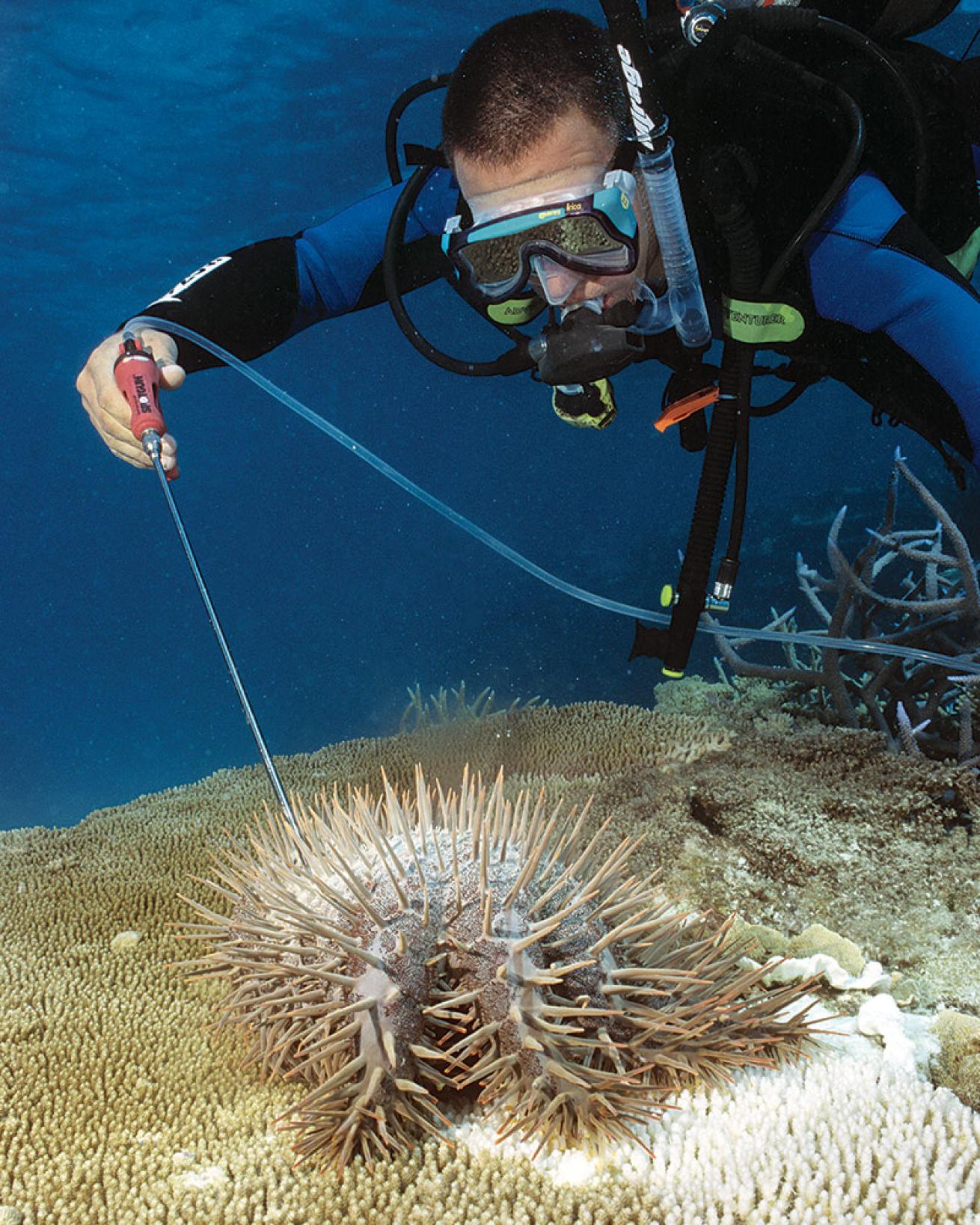
Dr. David Wachenfeld/Minden PicturesA diver injects a CoTS with bile salts.
“The Skilling Queenslanders for Work program takes unemployed youth, and we teach them to be occupational divers using the crown of thorns as the catalyst,” says McKenzie. “What we’re doing with our program is achieving good environmental outcomes for the reef, and changing lives.”
It takes the young divers six months to gain their divemaster status, and so far 230 trainees have graduated from the program and have dive qualifications, with an 85 percent employment rate.
One of the first recruits, Mathew Trueman, joined the program in 2010 and is now dive supervisor on board research vessel M/V Venus II.
“The look in a stranger’s eyes as I take them below the surface is one I will never tire of — excitement, awe, trepidation and sometimes a little fear,” says Trueman. “But, above all, the euphoria at the end of the dive, the congratulations, the excitement, the smiles. It’s absolutely amazing.”
McKenzie adds that it’s “not all doom and gloom on the reef, as the media sometimes suggests.
“The Great Barrier Reef is spectacular and one of the few coral-reef systems where you can see whales, coral fish, turtles and big sharks on a daily basis. But people need to understand the threats, and how they can help,” he says.
“We believe the reef can be saved. Perhaps not all of it, but the vast majority of it will survive. The more we can help to minimize stress factors, such as water quality and CoTS outbreaks, the greater chance coral has to adapt to its biggest threat: climate change.”
How to be a Citizen Reef Warrior
There are several citizen-science projects that you can contribute to, including Eye on the Reef, Coral Watch and ReefSearch.
- Sign up for ReefSearch, and you’ll be sent a field guide explaining how to contribute valuable data to scientists studying the Great Barrier Reef’s health by spending 10 minutes of each dive looking for key species, checking coral condition, and making note of any rubbish found.
- Coral Watch is focused on bleaching events and is managed by the University of Queensland. Your kit comes with a color-coded slate that helps you ID and record coral colors, which you can then upload via an app to a global database.
- Eye on the Reef is managed by the Great Barrier Reef Marine Park Authority. Download the Eye on the Reef app or log in online to report your sightings. A sighting can include incidents such as a bleaching event, CoTS, stranded or sick wildlife, and coral damage.


